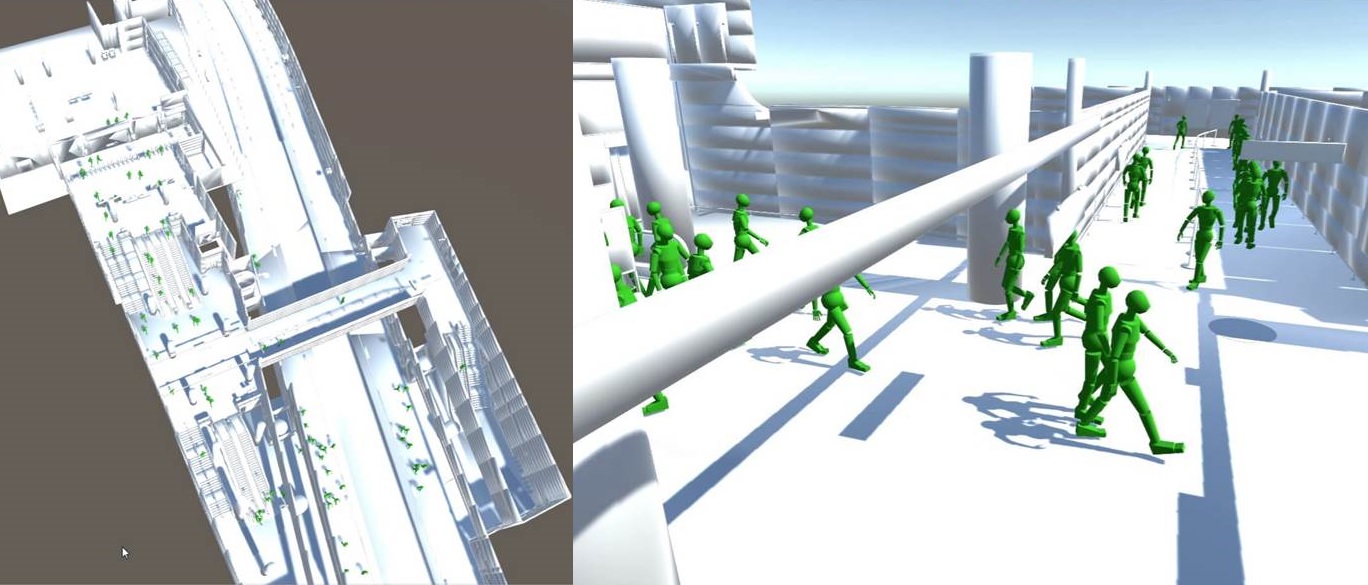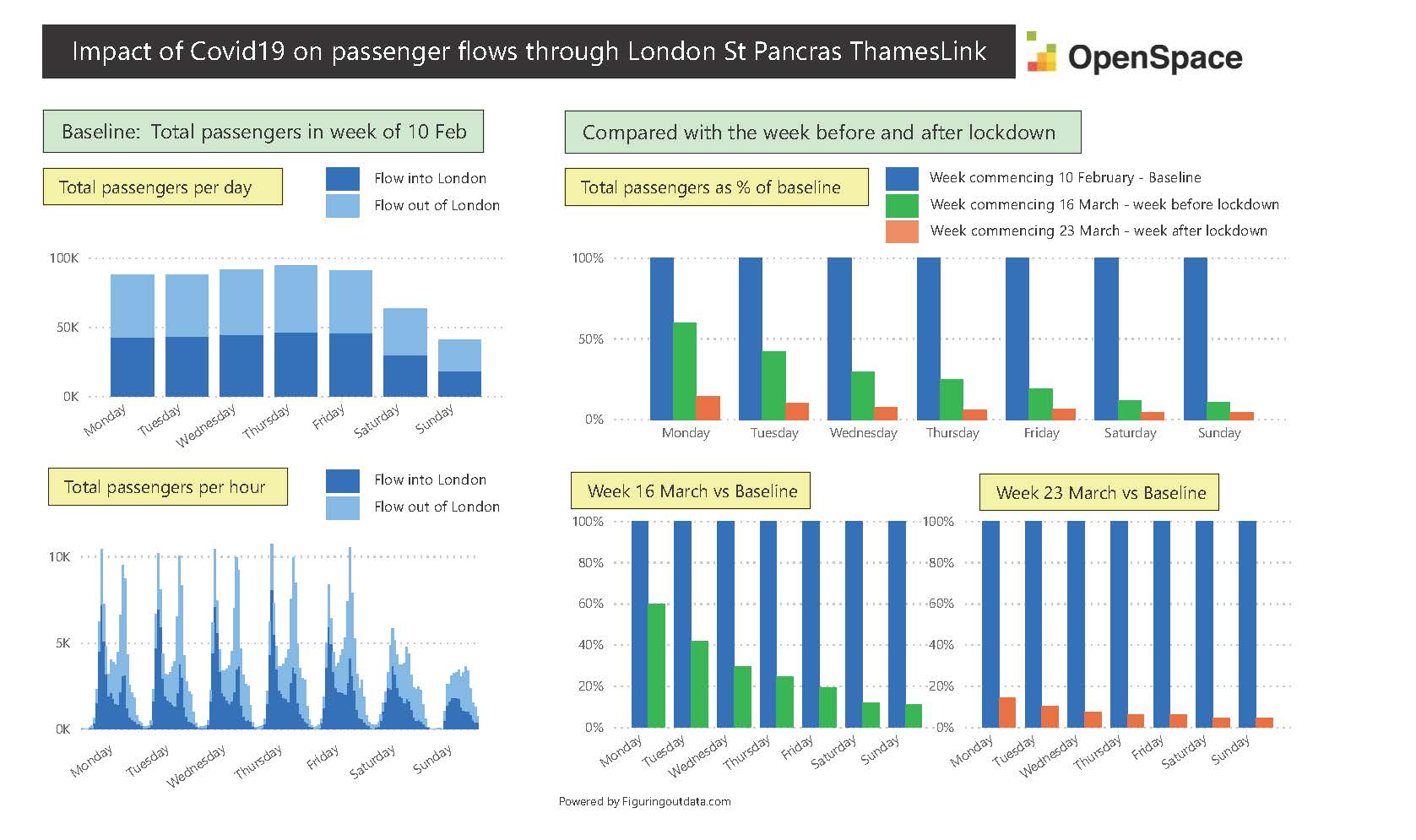A real-time digital twin of St-Pancras station, and the journey to create an emotion-optimised railway
In recent years, the key driver of innovation in rail has shifted towards customer experience. This change was long overdue. As our thinking develops and digital technologies advance, we have the opportunity to improve our understanding of customer experience, and design and operate a better railway accordingly.
Essentially, a good customer experience is one which elicits a positive impact on the emotions of each passenger. Such that they feel happier for having journeyed across the rail network.
Stress, panic and anger are often induced by circumstances such as overcrowding, lack of information, or having our morning coffee knocked out of our hands by a group of rushing passengers. While these experiences may seem trivial to some, they expose a profound truth for the rail industry—emotions are king. Rather, the emotions of passengers and staff should be king. But to achieve this, a lot of work needs to be done.
Emergent real-time digital twins, such as that at St Pancras, begin the process of creating a people-centric or an ‘emotion-centric’ railway. This is where journeys are optimised for happiness, tranquillity and satisfaction, and reduce stress, sadness and anger.
Accurately simulating individual passengers in a live digital environment, can move us towards evidence-based decision-making rooted in the customer’s worldview.
Stations are the emotional hotspot of the railway.
For far too long, the focus has been on optimising inanimate concrete buildings connected by rails and moving trains, while forgetting about people—wonderfully dynamic in feeling and location. After all, humans are the reason that physical assets exist.
Stations are the emotional hotspot of the railway. The concrete and steel of stations represent the beating heart of the rail network. These are the place where the human heart beats quicker, and skin rises in temperature for reasons such as congestion, platform changes and broken escalators.Time-travelling digital twin
We’ve experienced first-hand the emotions of those trying to improve the design and operation of railway stations. For over 20 years we worked with architects, designers and operators to ease the movement of people and elevate customer experience at stations all over the world.Many a-time, myself and fellow transport engineers and data scientists would scratch our heads and discuss how a tool that allowed us to do this, or do that would be beneficial. We thought about how we could improve the experience for customers, if we had the technological means to do so.
The technological saviour never came, but we soldiered on. Remarkably, today, the tools for station designers, modellers, operators and owners have barely changed and leave much to be desired.
A digital twin is not a mere copy of physical reality in zeros and ones. It’s something far more radical
It’s only now, when detection technology, computer processing, data storage, and analytical techniques have become cheap enough, accurate enough, and fast enough for the office-dreams of engineers, mine included, to become a reality.
Back then our ideas weren’t called ‘digital twin’. We wanted more data to build better dynamic pedestrian models. We wanted real-time information on station performance to improve operations. And we wanted to predict the near future condition of a station, and test scenarios, to enable better decisions on the fly.
It’s important to note that there’s an important distinction between what most people mean by digital twin, and what the phrase seems to imply. A digital twin is not a mere copy of physical reality in zeros and ones. It’s something far more radical. A ‘time-travelling hologram with superior intelligence and communication skills’ would be more accurate.
First-of-a-kind at St Pancras
In early 2019, we brought together pioneering technology companies alongside High Speed 1, Govia Thameslink Railway, Network Rail – High Speed, and Birmingham Centre for Railway Research and Education to demonstrate a digital twin centred on people and their emotions. The project had three distinct streams: build the copy, bring it to life and bolster operations.
We ‘built the copy’ by gathering disparate data sources and tools to create a static 3D virtual replica of the station environment. Using state-of-the-art laser scans and deep learning, our team automated the creation of a Building Information Model (BIM) model of St Pancras. Objects, like doors, lights and signs, were automatically classified and annotated using computer vision.

St Pancras 3D laser-scan point-cloud (left) and automatically generated BIM model (right)
Next, we added dynamic and live data to the system to bring it to life. Data sources included feeds describing train arrivals, and newly installed stereo cameras that detected passengers at strategically placed locations. Using machine learning and a pedestrian simulation engine, we created an accurate representation of live passenger movements throughout the station.
A suite of data visualisation tools—dashboards and interactive environments—provided station owners with access to station performance data, with a coverage, frequency and accuracy never before seen. The information was granular and timely, and included metrics such as journey times, flow rate, passenger comfort and escalator usage, all constantly compared with the baseline in real-time, for every minute of operation.
We are on a digital twin mission to put people at the heart of the design and operation of the built environment
What’s more, through the use of virtual reality headsets, operators put themselves in the shoes of passengers in real-time. For example, those approaching a crowded area can see and feel some of what customers are feeling. This helped to inform better operational responses, customer engagement and improve communication to stakeholders. It will also be used to improve station design moving forward.
In addition, we bolstered operations through algorithms that triggered alerts when asset performance dropped below a certain level or when congestion was predicted to occur. Staff could take the appropriate course of action to alleviate or mitigate the situation, for example, stemming flow at particular access points.
Through virtual sight and supportive analytics we can calculate the optimum position for wayfinding signage and advertisements along each walking route. These insights help to increase calmness and customer experience through improved navigation and subsequently boost commercial revenue.
The OpenSpace platform was designed to detect the distance between passengers in real-time for crowd management purposes. Recently, in the wake of the coronavirus pandemic and the need to monitor social distancing we have found a new application for our technology. At this time such information can be used to provide a useful indicator of public adherence to COVID-19 distancing guidelines, especially as lockdown measures lifted in stages.

Live passenger movements at St Pancras from OpenSpace’s Cognitive Platform

Chart by OpenSpace, 2020.
Expanding the digital reach
We believe we have achieved a step-change in people flow management and are moving towards emotion-optimisation at St Pancras. This is all through datafication, machine learning and visualisation.
But we want more. We want to spread the tentacles of our digital twin further, to link people flow across different stations, lines and carriages in a growing network of systems-wide optimisation. A welcome boost for the lowly rail-dwelling passenger.
We are on a digital-twin mission to put people at the heart of the design and operation of the built environment.
We are delighted to be exploring this mission and expansion of our digital reach through RSSB’s Data Sandbox++ initiative over the coming months.

